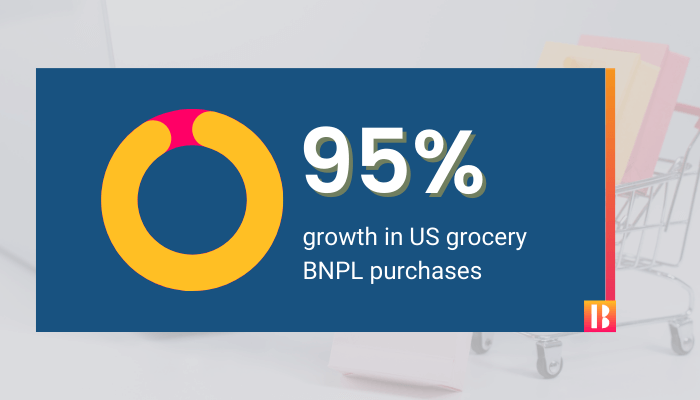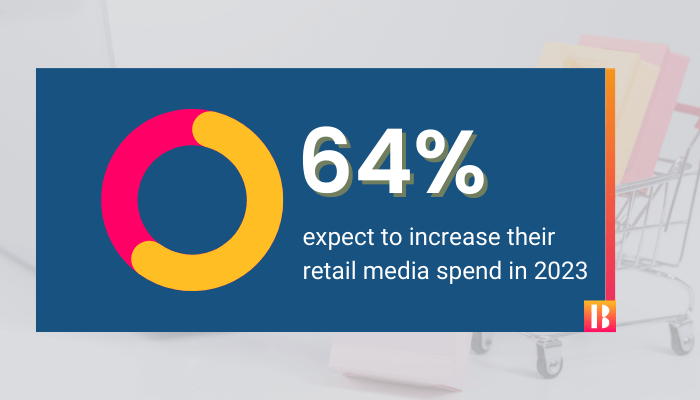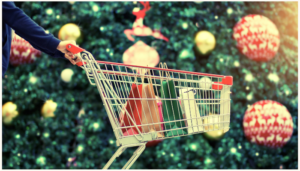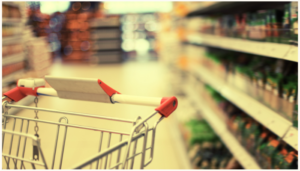5 CPG and Retail Trends for 2023
Reading Time: 16 Minutes
So much has happened in the CPG and retail world this year. When I think back on the past 12 months, memorable headlines around the Kroger – Albertsons merger and CPGs in the metaverse come to mind… plus topics like Cyber 5’s record-breaking statistics (196.7 million consumers went shopping), and the popularity of third-party grocery delivery services. There’s no way I could look back at 2022 and not mention the impact of inflation, the advances of omnichannel shopping, or the rise of bargain shoppers.
Let’s dive into these trends more closely:
» Omnichannel shopping is an essential business strategy. Most shoppers (87%) research products online before buying them and Nielsen says that 1 in 5 (22%) of shoppers plan an in-store shopping trip combined with a prior online order. Omnichannel shopping is a considerable part of consumer behavior. Implement an omnichannel strategy to meet your consumers needs wherever they are.
» Consumers are spending but want to stretch their dollars. Bargain hunting was a key ingredient in 2022 and will continue into the new year. Nearly three-quarters of in-store shoppers and online shoppers alike agree that it’s very or extremely important that the store where they shop has low prices. Shoppers are willing to shop across retailers for the best value. Make sure you offer the most competitive pricing and promotions while having the right selection and assortment.
» Food inflation is outpacing overall inflation and changing how consumers shop. The Consumer Price Index (CPI) increased by 0.4% from September 2022 to October 2022 and was up 7.7% from October 2021. The CPI for food-at-home (grocery or supermarket food purchases) increased 0.5% from September 2022 to October 2022 and was 12.4% higher than October 2021.
Growth Ahead
The consumer goods industry and grocery retail market will experience growth. The US CPG packaged food market was valued at $1.03 trillion in 2021 and is expected to expand at a compound annual growth rate of 4.8% from 2022 to 2030. Supermarket and grocery stores will hit $811.5 billion in 2022.
We know that shoppers are returning to brick and mortar but they’re not withdrawing from the convenience of e-commerce. Experts predict worldwide retail e-commerce sales will soar from about $5 trillion to just over $8 trillion by 2026.
As we gear up for the year ahead, let’s consider what trends will shape the future. Continue reading to learn our predictions for next year’s CPG crazes and retail trends.
5 Trends That Will Shape the Industry in 2023
1. Buy Now Pay Later Services
The “buy now pay later” (BNPL) model saw serious growth in 2022; the week of Black Friday alone saw a 78% increase in BNPL payments over the previous week.
What is buy now pay later? BNPL is a form of credit that allows shoppers to split their transaction into smaller, interest-free installments that they can repay over a period of time.
Growth in e-commerce has helped BNPL services gain traction in the US. BNPL payments are expected to grow by 48.6% on an annual basis to reach $126.5 million in 2022 and adoption is expected to grow steadily. The market is expected to grow to $457.3 billion in 2026 at a CAGR 45.7%.
And with a continued focus on inflation, Americans are using BNPL to them to finance their groceries. In the last year, Zip, a BNPL company based in Australia, says it has seen 95% growth in US grocery purchases. Klarna, a fintech company with post-purchase payment options, reports that more than half of the top 100 items its app users buy from national retailers are grocery or household items. Zilch, another BNPL app, says groceries and dining out account for 38% of its transactions.
Many retailers have already added buy now pay later options at checkout; the service is already available at Costco, Home Depot, Walmart, Target, Instacart, Kroger, Amazon, PetSmart, and Staples.

2. Private Label Popularity
The global private label food and beverages market is expected to grow by $281.15 billion during 2023 – 2027 according to Report Linker. As we mentioned, food categories were hit hard by inflation and rising prices correlate to strong private label sales. Most shoppers (65%) are willing to trade down if prices are too high, and right now private-label products account for 19% of total US CPG sales.
Value retailers are thriving; Walmart and Dollar General have had stronger-than-expected sales this year, and overall foot traffic is up at discount and dollar stores. Nielsen reports that when inflation peaked in October, value-based retailers’ sales jumped by 10% – capturing 42% of CPG sales.
3. TikTok Influences Grocery Purchases
Social media serves as a resource for young shoppers. Social commerce is forecasted to reach $30.73 billion in sales in 2023. Gen Z uses TikTok for search and product recommendations – more than Google.
“Our teams are really leaning into TikTok, with varied strategies that hit the right tone for our McCormick, Frank’s RedHot, OLD BAY, and Cholula brand fans,” says Jill Pratt, chief marketing officer at McCormick. “For years we heard about how the human attention span was shorter than a goldfish. TikTok has found a way to engage users – they’re spending the most time in this app, willing to view increasingly longer video formats, and reporting that they’ve been influenced to purchase.”
According to data from Instacart, viral TikTok recipe videos drive spikes in grocery store sales for the ingredients used to make them. Looking ahead to 2023, Instacart predicts that affordability will be a key factor in video-driven ingredient sales, as 56% of poll respondents said they consider this when making a recipe they viewed on social media.
4. Retail Media Network Acceleration
Today, CPG brands invest about 20% of their marketing budgets in retail media networks, and 64% expect to increase their retail media spend in 2023. The category is led by Amazon (which has more than 75% of ad revenue share) but Walmart, Target, and Kroger are key players too.
What is a retail media network? A retail media network (RMN) is an advertising business that a retailer sets up in order to allow advertisers to buy advertising space across the retailer’s owned (onsite) properties and aid (offsite) media, using consumer data to connect with consumers throughout the buyer journey.
The value of a retail media business rests largely on the strength of the consumer relationship. 81% of consumers have registered a digital account with a retailer and 53% of consumers notice sponsored products or ads on retailer websites.

5. Data-Driven Approach
It probably comes as no surprise that data and analytics will play a critical role for brands and retailers in 2023. CPGs and retailers will depend on data to drive margin and share. Because today’s consumers are focused on value and convenience, companies need to track prices, promotions, assortment, and availability data to win across categories and channels.
Josh Blacksmith, senior director of global consumer relationships & engagement at Kimberly-Clark, foresees “another exciting year ahead that’s fueled by continued advances in data accessibility and connectivity, AI/ML journey-based technologies, and agile creative capabilities.”
Key CPG Data and Analytics
⇒ Product matching
⇒ Price violations
⇒ Availability & out of stock
⇒ Promotional comparisons
⇒ Assortment analysis
⇒ Share of digital shelf
Key Retail Data and Analytics
⇒ Product matching
⇒ Price checks
⇒ Assortment recommendations
⇒ Promotional comparisons
⇒ Content curation
⇒ Analytics
These key data points are a strategic asset and will help businesses drive profitability. With the right data…
- Your brand can track your share of digital shelf and identify assortment gaps and innovation opportunities.
- Your store can accurately match products with hundreds of competitive catalogs and transform the scale of your competitive strategy.
- Your brand could achieve an uplift in channel sales in a particular market by capturing store-level assortment data.
- Your store can establish more competitive pricing based on the market landscape so you can compete without compromising margin.
- You can claim more of the omnichannel growth and regularly monitor key data points for data-backed decisions.
Data and analytics lets you move the needle in a powerful day and leading CPGs and retailers will take hold of these capabilities to grow in a scalable, streamlined way.
2023 CPG and Retail Opportunities
The new year is full of promise and opportunity. You can activate strategic changes with real-time competitive pricing analytics. With our data capabilities, you can identify growth opportunities, see the competitive landscape, and drive profitability.
If you’re ready to modernize and transform your data environment, reach out today for a free demo.
Wishing you all a successful and healthy new year. Cheers!
The Latest Insights – Straight to Your Inbox
Sign up for the Bungee Tech mailing list for actionable strategies, upcoming events, industry trends, and company news.














